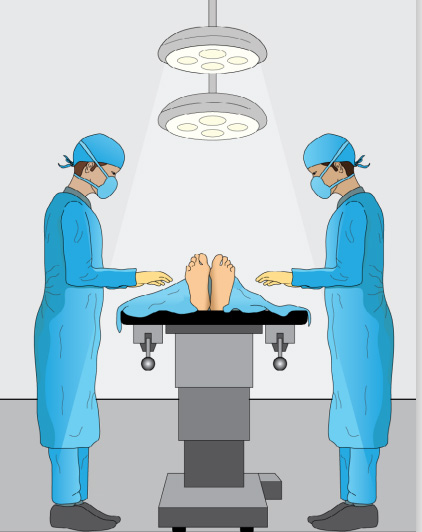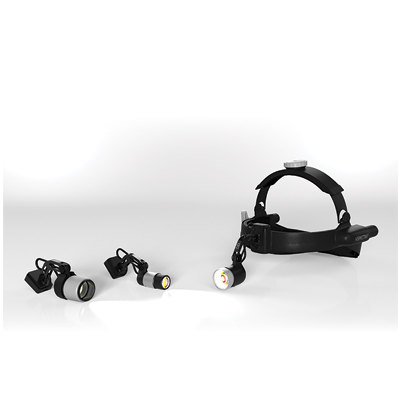The American College of Surgeons looks to prevent long-term injuries while ensuring safe and effective procedures.
 American College of Surgeons
American College of SurgeonsUNIMPEDED LIGHT The American College of Surgeons recommends that overhead lights be placed between the surgeon and their assistant in most cases.
The American College of Surgeons (ACS) Division of Education Surgical Ergonomics Committee was created to address the ergonomic challenges surgeons often experience and to help improve their ergonomic well-being. Last year, the committee delivered the results of this initiative in the form of its Surgical Ergonomics Recommendations. Not surprisingly, surgical lighting and visualization was an included subject of focus.
A major issue surgeons often face in ORs is improper lighting and display orientation. This can not only adversely affect performance, but also cause eye strain and musculoskeletal fatigue that could lead to limitation of practice, long-term disability and the need for corrective surgery. To combat these concerns and protect the health of surgeons while ensuring safe and effective surgery, the ACS committee delivered these recommendations surrounding surgical lighting and monitor placement:
During open surgery: Ensure that the open surgical field has high illuminance using two or more OR lights at different angles. Avoid creating shadows from a single light source caused by a surgical team member’s head. ACS recommends placing the overhead lights between the surgeon and assistant in most cases.
During laparoscopic surgery: Room lights should be dimmed to reduce glare and contrast on display monitors while still offering enough ambient light that the surgical team can move safely throughout the room. Any display monitor used during a laparoscopic surgery should be placed directly in front of the surgeon with its upper boundary at eye level and the center of its screen slightly below eye level in order to facilitate and maintain a neutral neck posture.
During robotic surgery: ACS recommends adjusting viewer height so the user’s back is not crouched, and adjusting viewer tilt to minimize forward flexion. The surgeon should avoid pushing their forehead excessively into the console’s headrest when focusing on a case, and take advantage of 3D visualization when available to improve depth perception.
ACS recommends that teams preplan lighting and monitor positioning before and between every case with these recommendations in mind.
To prevent injury over the long term, ACS also advises surgeons to take a few minutes throughout the day to stretch their neck and shoulders, as well as to consider transitioning, when appropriate, from performing open surgeries to robotic-assisted procedures to take advantage of their improved ergonomics.
.svg?sfvrsn=be606e78_3)



.svg?sfvrsn=56b2f850_5)